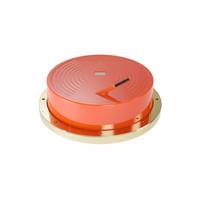
Kongsberg Discovery Announces Echo Sounder Upgrade
for research-based innovation in Norway, has been the focal point of this development. “Adding low-frequency wideband capacity is a game-changer for ocean research by providing much more details from a spectrum that holds a lot of information,” concludes leader of CRIMAC and senior Institute of Marine Research (IMR) researcher Nils Olav Handegard.Normal production of the ES18-11 MK2 has started, with scheduled deliveries from August
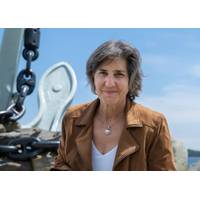
Happy to be Blue
Dr. Anya Waite leads Ocean Frontier Institute’s interdisciplinary marine research.As published in the March/April edition of Marine Technology Reporter“There’s something compelling about the color blue,” said Dr. Anya Waite, scientific director and CEO of the Ocean Frontier Institute (OFI) and associate and vice president research (ocean) at Dalhousie University. As the bright sky shone through her office window and the waters of Halifax Harbor glimmered through the tree line, blue seemed to be even more inspiring. OFI, based on Dalhousie’s campus, is an interdisciplinary
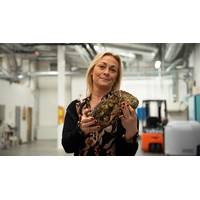
Norway Finds 'Substantial' Mineral Resources on Its Seabed
its seabed mineral exploration until more studies are conducted to understand the organisms living on the seabed and the impact of mining on them. There is "a great lack of knowledge" of deep oceans, where new and undiscovered species are potentially to be found, Norway's Institute of Marine Research said in a consultation letter. The NPD said its estimates showed resources "in place", and further studies were needed to establish how much of those could be recovered with acceptable environmental impact. I(Reuters - Reporting by Nerijus Adomaitis; editing by Jason Neely)INSIGH
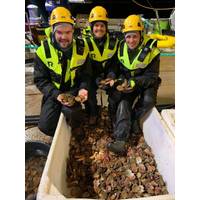
Tau Tech Raises $34.4m for Sustainable Seabed-Harvesting Tech
method to protect seabed fauna. As a result, valuable seafood resources along the Norwegian coast have remained inaccessible for 30 years. Together with Norwegian independent research institute SINTEF, Tau Tech has developed a seabed-friendly harvesting method. In cooperation with the Institute of Marine Research, the Directorate of Fisheries and other leading marine experts, the company has proven over the past five years that its technology makes it possible to identify, select and sort shells without destroying surrounding vegetation and life. This opens up new, sustainable opportunities for
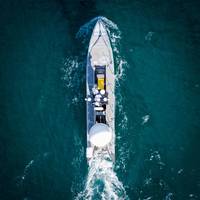
Need a Survey? There’s a USV for That
;s Sounder USV. Photo courtesy KongsbergKongsbergKongsberg Maritime’s 8m-long diesel-powered Sounder USV is due to see its first delivery to a customer this summer; TASA – a Peruvian fishing company. It will be equipped with fish-finding sonars. Another two, ordered by the Norwegian Institute of Marine Research, equipped with ocean science sonars, MBES and sub-bottom profilers, are due for delivery in 2022-23.A big focus for Kongsberg is control systems, such as K-MATE, which was integrated into SEA-KIT’s GEBCO-NF XPRIZE USV, and marine broadband communications, which allow for going beyond
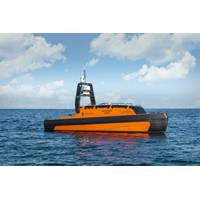
Norway: IMR to Use Kongsberg USVs, AUVs for Marine Ecosystem Monitoring
Norwegian maritime technology and equipment specialist Kongsberg Maritime will supply Norway’s Institute of Marine Research (IMR) with four autonomous vessels. The scope of supply includes two Kongsberg Maritime Sounder USVs (Unmanned Surface Vehicles) and two KONGSBERG AUVs (Autonomous Underwater Vehicles), which will form the practical basis of the institute’s long-term strategy to develop the monitoring and management of marine environments and resources.According to Kongsberg Maritime, the four autonomous vessels will be equipped with Kongsberg's new Blue Insight, a cloud-based
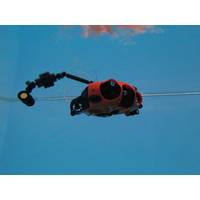
Subsea Tech's 'March of Miniaturization'
all subsea operations have to be done by subsea vehicles. Another start-up, Birdview, is designing an aerial drone that can drop sensors into the water to gather data – or whatever you might want a subsea sensor to do. The Oslo-based company has already been working with Norway’s Institute of Marine Research (IMR) in Bergen to provide a remote sensor for offshore fisheries – i.e. a drone that is launched from a fishing vessel and dips a sonar into the water to see if there are shoals of fish, which can then inform the vessel where it should go.Mohibb Malik, a Project engineer at Birdview
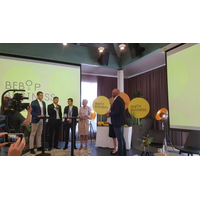
Norwegians Collaborate on Mapping Plastic in the Oceans
The Institute of Marine Research, shipowner Torvald Klaveness, Kongsberg and the Norwegian Shipowners’ Association have entered into a public-private partnership to develop a pilot project with the aim of mapping marine plastic and other environmental parameters vital to the health of the oceans. The partners will equip several vessels with advanced sensors to collect data for the Institute of Marine Research. Every minute, about 15 tons of plastic end up in the ocean. If this trend of marine plastic pollution continues, by 2050 there may be more plastic than fish in the sea. This is a matter
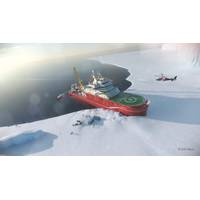
Research Vessels: The Fleet is In
Kronprins Haakon A new oceanographic icebreaker being built for the Norwegian Polar Institute (NPI) was launched by shipbuilder Fincantieri in Italy earlier this year. The $177 million vessel, RV Kronprins Haakon, due for delivery by the end of 2017, will be owned by the NPI, while the Institute of Marine Research (IMR) will have operational responsibility and the University of Tromsø will be her main user. The high-tech PC 3 class icebreaker vessel was designed by Rolls-Royce Marine to operate year round in polar waters, providing a high-tech facility for the study of the marine
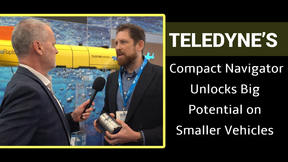
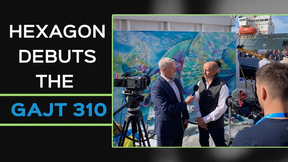
 February 2025
February 2025





